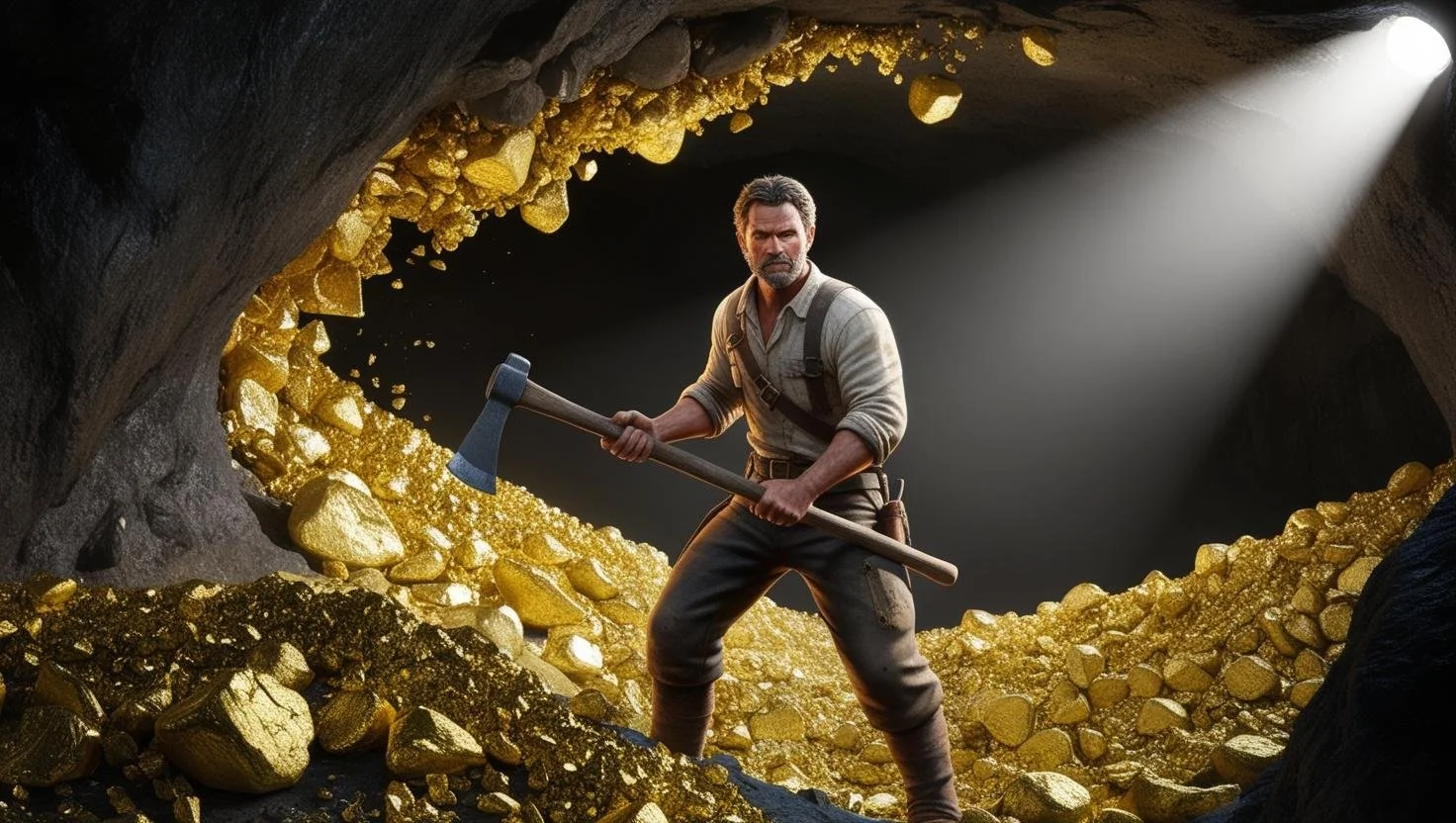What Are Gold Mining Processes? The NEVER-ENDING PURSUIT of Gold
The NEVER ENDING Pursuit of Gold
Gold mining is more than just digging for shiny rocks—it’s a saga of human ingenuity, greed, and technological evolution. From ancient Egyptians panning riverbeds to modern miners using AI-powered drills, the quest for gold has shaped economies, sparked wars, and fueled innovations. But how exactly do we extract gold today? Let’s break down the science, history, and jargon behind gold mining processes while keeping it simple enough for a high schooler to grasp.
Section 1: What Is Gold Mining? A Basic Definition
Gold mining refers to the methods used to extract gold from the Earth’s crust. This precious metal exists in two primary forms:
Placer deposits: Loose gold particles in riverbeds or sediments (think panning during the Gold Rush).
Lode deposits: Gold embedded in hard rock, requiring drilling and blasting.
But before we dive into modern techniques, let’s travel back in time to understand how our ancestors tackled this glittering challenge.
Section 2: Historical Evolution of Gold Mining
Ancient Techniques: From Panning to Mercury
Gold mining began around 4,000 BCE, when early civilizations like the Egyptians used alluvial mining—sifting gold from river sands using reed baskets. The Romans later advanced hydraulic mining, channeling water to erode hillsides and expose gold veins. However, these methods had a dark side: the use of mercury to bind gold particles, a practice still causing environmental harm today.
Quote Alert!
“Gold is the child of Zeus; neither moth nor rust devoureth it.”
— Pindar, Greek poet (518–438 BCE), highlighting gold’s enduring value.
The Industrial Revolution: Steam Power and Cyanide Leaching
The 19th century brought steam engines and dynamite, allowing miners to dig deeper. But the game-changer was the cyanide leaching process, invented in 1887. By dissolving gold from crushed ore using cyanide solutions, miners could extract up to 97% of gold—far more efficient than mercury.
Fun Fact:
The Witwatersrand Basin in South Africa, discovered in 1886, became the world’s richest goldfield, producing over 40% of all gold ever mined.
Section 3: Modern Gold Mining Processes
Today’s gold mining combines brute force with precision technology.
Here’s how it works:
Step 1: Exploration & Geochemical Analysis
Before digging, companies use geophysical surveys (like magnetic resonance imaging for the Earth) and assay drilling to locate gold-rich zones. Drones and AI models now predict ore grades, reducing guesswork.
Jargon Check:
Ore grade: The concentration of gold in a rock (e.g., 5 grams per ton).
Tailings: Waste material left after extraction.
Step 2: Extraction Methods
Open-Pit Mining: Giant excavators remove surface soil to access shallow gold deposits. Think of it as peeling an onion layer by layer.
Underground Mining: For deep lode deposits, miners dig shafts and tunnels. Safety is key here—modern mines use ventilation systems and robotic drills to reduce risks.
Step 3: Processing the Ore
Crushing: Rocks are pulverized into gravel-sized pieces.
Cyanide Leaching: The gravel is mixed with cyanide solution, which bonds with gold particles.
Carbon-in-Pulp (CIP): Activated carbon filters extract gold from the cyanide mix.
Electrowinning: An electric current separates gold from carbon, creating a gold “sludge”.
Quote Alert!
“The science of mining is not merely to extract, but to do so sustainably.”
— Georgius Agricola, 16th-century scientist and author of De Re Metallica.
Section 4: Environmental and Ethical Challenges
Gold mining isn’t all glitter. Key issues include:
Mercury Pollution: Artisanal miners in developing nations still use mercury, poisoning waterways.
Land Degradation: Open-pit mines leave moonscapes. Companies like Rio Tinto now invest in land rehabilitation, replanting native flora post-mining.
Conflict Gold: Illegally mined gold funds wars in regions like West Africa. Ethical certifications (e.g., Fairmined Gold) aim to combat this.
Did You Know?
Recycling old electronics (“urban mining”) recovers 300+ tons of gold yearly—no digging required!
Section 5: The Future of Gold Mining
AI and Automation
Drones map deposits, while autonomous trucks haul ore in mines like Australia’s Boddington. AI also predicts equipment failures, cutting downtime.
Green Mining Innovations
Bioleaching: Using bacteria to extract gold (no cyanide needed!).
Dry Washers: Waterless systems for arid regions, reducing H2O use.
Quote Alert!
“By 2025, gold production will peak and decline unless we innovate.”
— Oliver Blagden, CRU analyst.
Conclusion: Gold’s Legacy and Tomorrow’s Mines
Gold mining is a blend of ancient grit and cutting-edge tech. While challenges like pollution and ethical sourcing persist, the industry is pivoting toward sustainability. Whether you’re a history buff or a science geek, gold’s story proves that even the shiniest treasures come with a cost—and a call to innovate.


